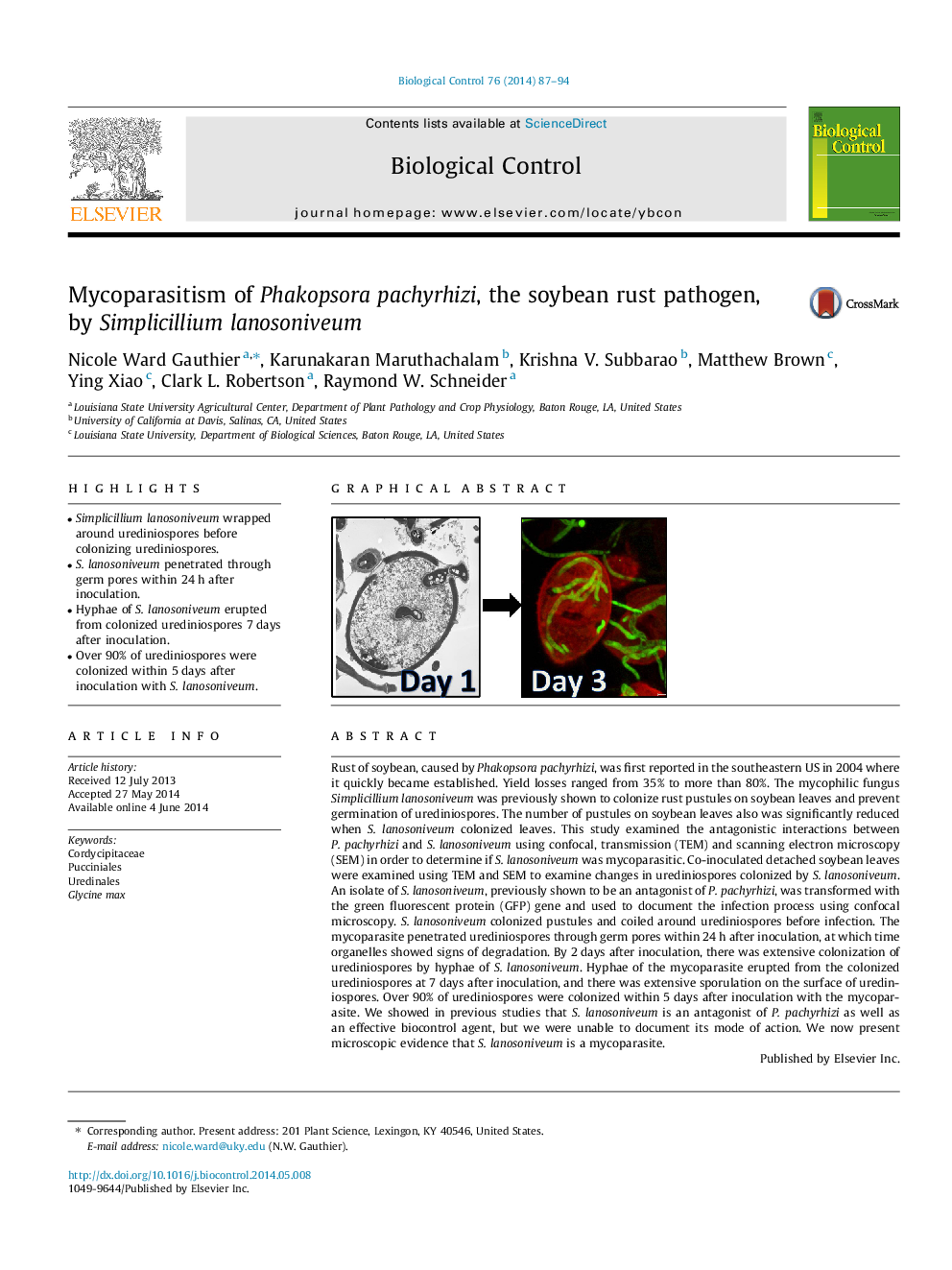| کد مقاله | کد نشریه | سال انتشار | مقاله انگلیسی | نسخه تمام متن |
|---|---|---|---|---|
| 4503888 | 1624258 | 2014 | 8 صفحه PDF | دانلود رایگان |

• Simplicillium lanosoniveum wrapped around urediniospores before colonizing urediniospores.
• S. lanosoniveum penetrated through germ pores within 24 h after inoculation.
• Hyphae of S. lanosoniveum erupted from colonized urediniospores 7 days after inoculation.
• Over 90% of urediniospores were colonized within 5 days after inoculation with S. lanosoniveum.
Rust of soybean, caused by Phakopsora pachyrhizi, was first reported in the southeastern US in 2004 where it quickly became established. Yield losses ranged from 35% to more than 80%. The mycophilic fungus Simplicillium lanosoniveum was previously shown to colonize rust pustules on soybean leaves and prevent germination of urediniospores. The number of pustules on soybean leaves also was significantly reduced when S. lanosoniveum colonized leaves. This study examined the antagonistic interactions between P. pachyrhizi and S. lanosoniveum using confocal, transmission (TEM) and scanning electron microscopy (SEM) in order to determine if S. lanosoniveum was mycoparasitic. Co-inoculated detached soybean leaves were examined using TEM and SEM to examine changes in urediniospores colonized by S. lanosoniveum. An isolate of S. lanosoniveum, previously shown to be an antagonist of P. pachyrhizi, was transformed with the green fluorescent protein (GFP) gene and used to document the infection process using confocal microscopy. S.lanosoniveum colonized pustules and coiled around urediniospores before infection. The mycoparasite penetrated urediniospores through germ pores within 24 h after inoculation, at which time organelles showed signs of degradation. By 2 days after inoculation, there was extensive colonization of urediniospores by hyphae of S. lanosoniveum. Hyphae of the mycoparasite erupted from the colonized urediniospores at 7 days after inoculation, and there was extensive sporulation on the surface of urediniospores. Over 90% of urediniospores were colonized within 5 days after inoculation with the mycoparasite. We showed in previous studies that S. lanosoniveum is an antagonist of P. pachyrhizi as well as an effective biocontrol agent, but we were unable to document its mode of action. We now present microscopic evidence that S. lanosoniveum is a mycoparasite.
Figure optionsDownload as PowerPoint slide
Journal: Biological Control - Volume 76, September 2014, Pages 87–94